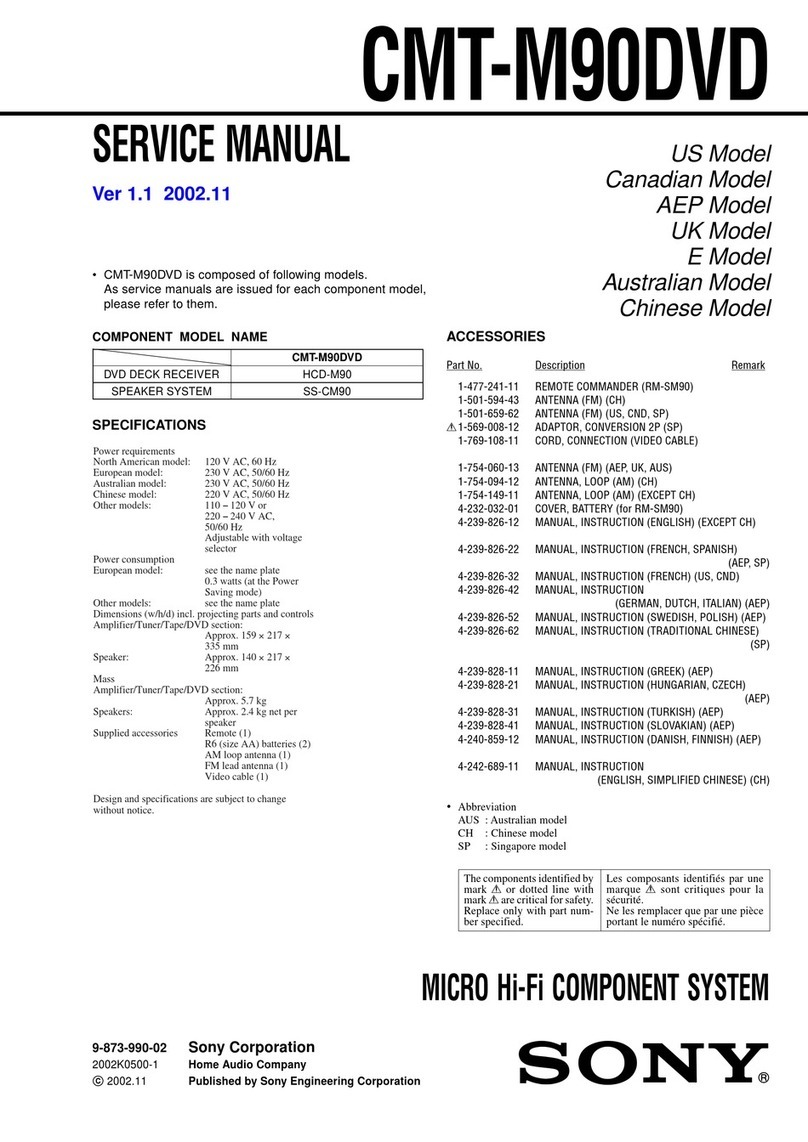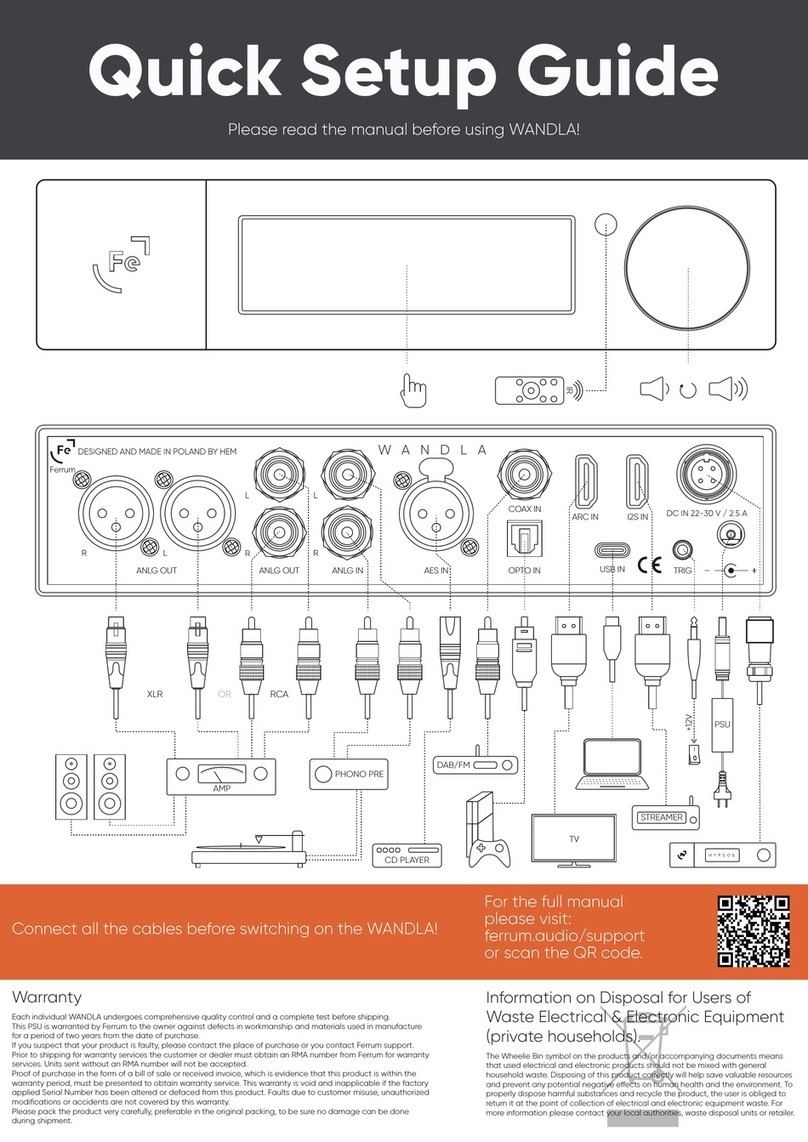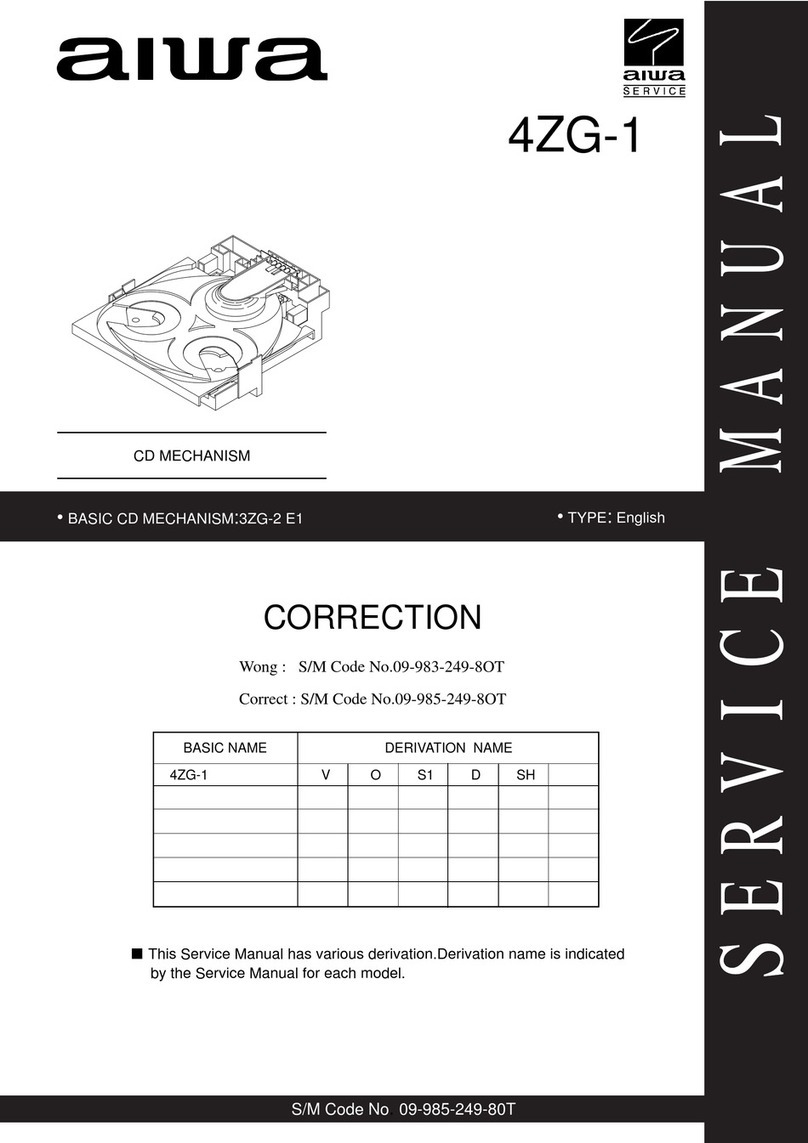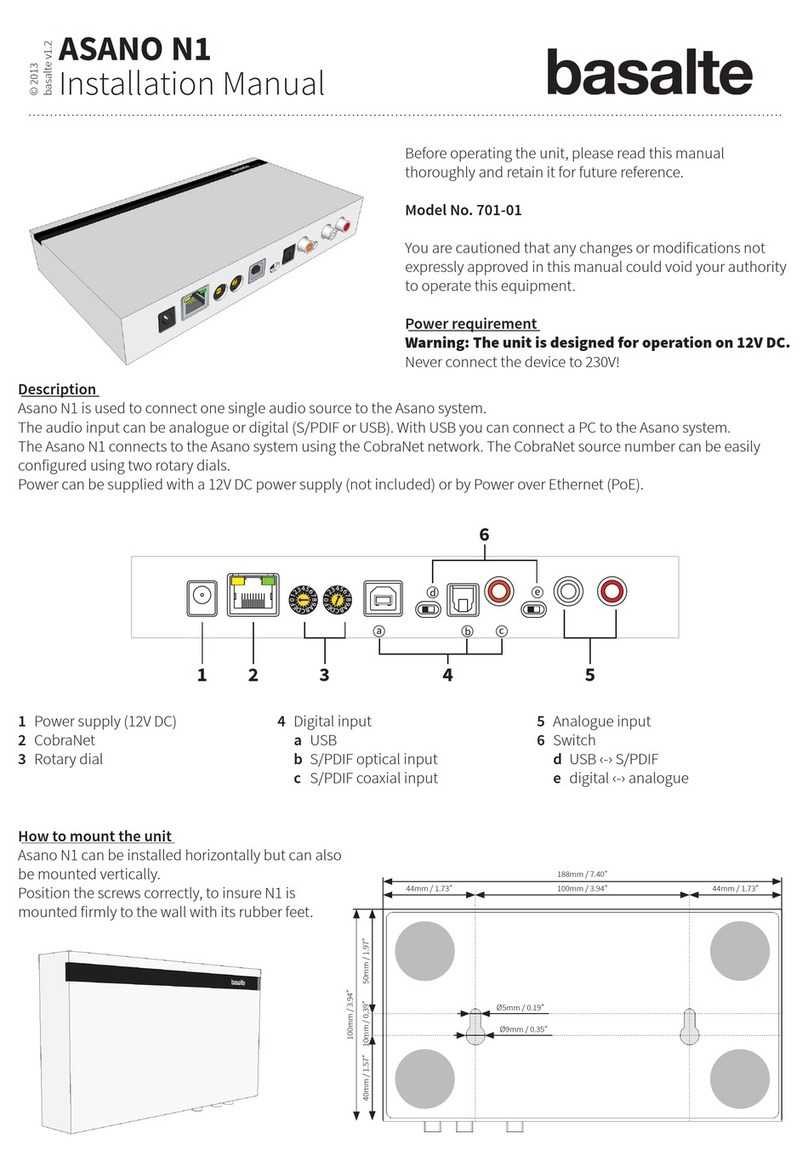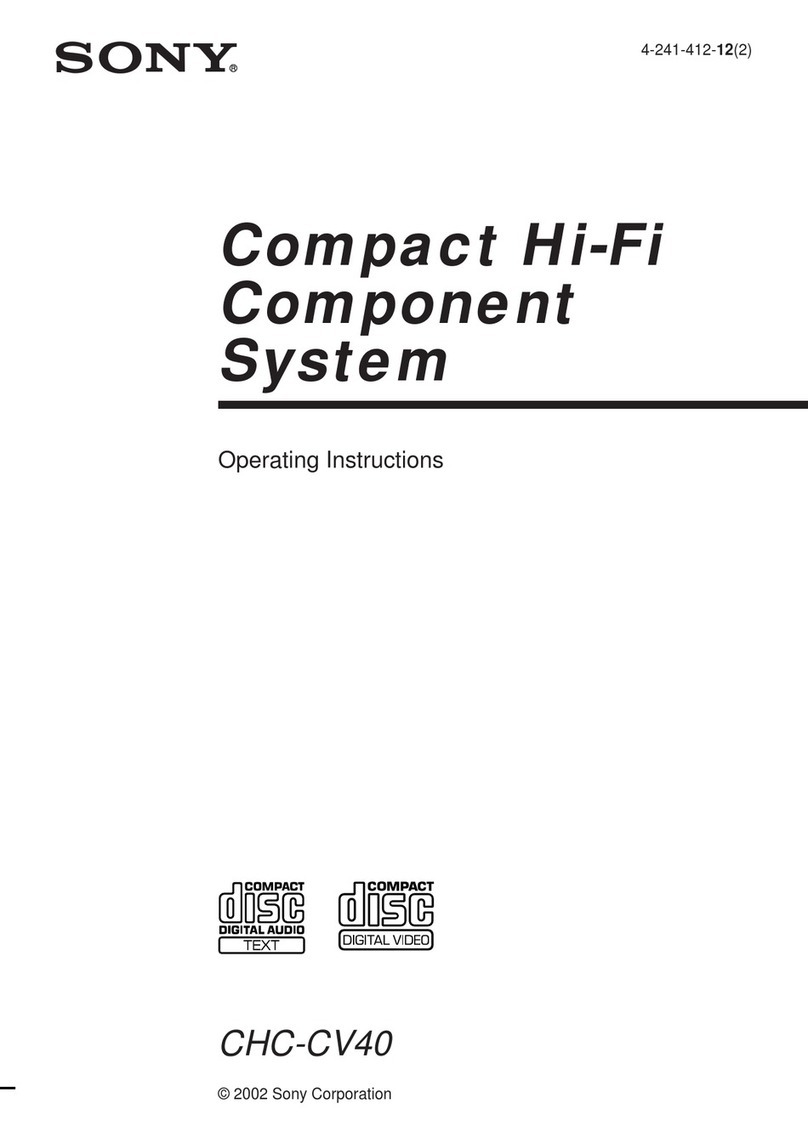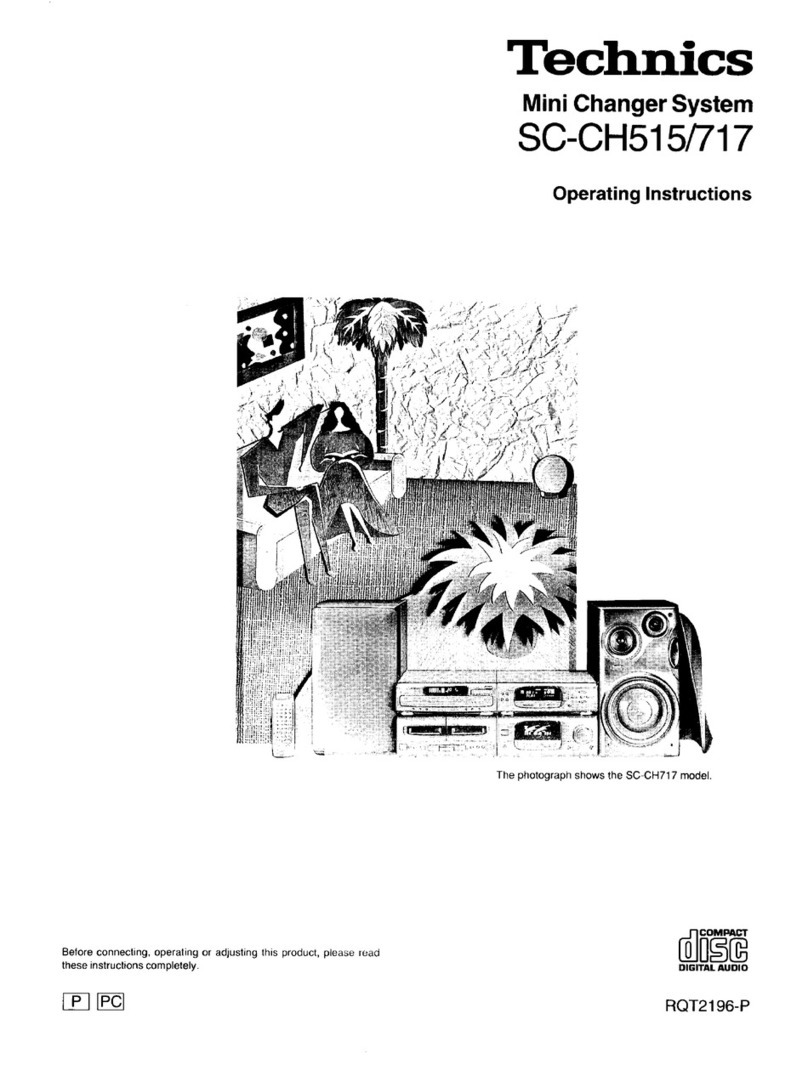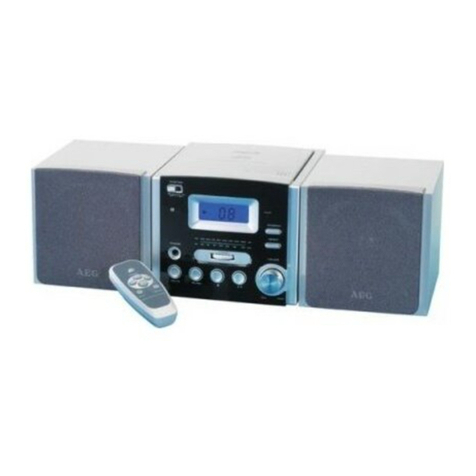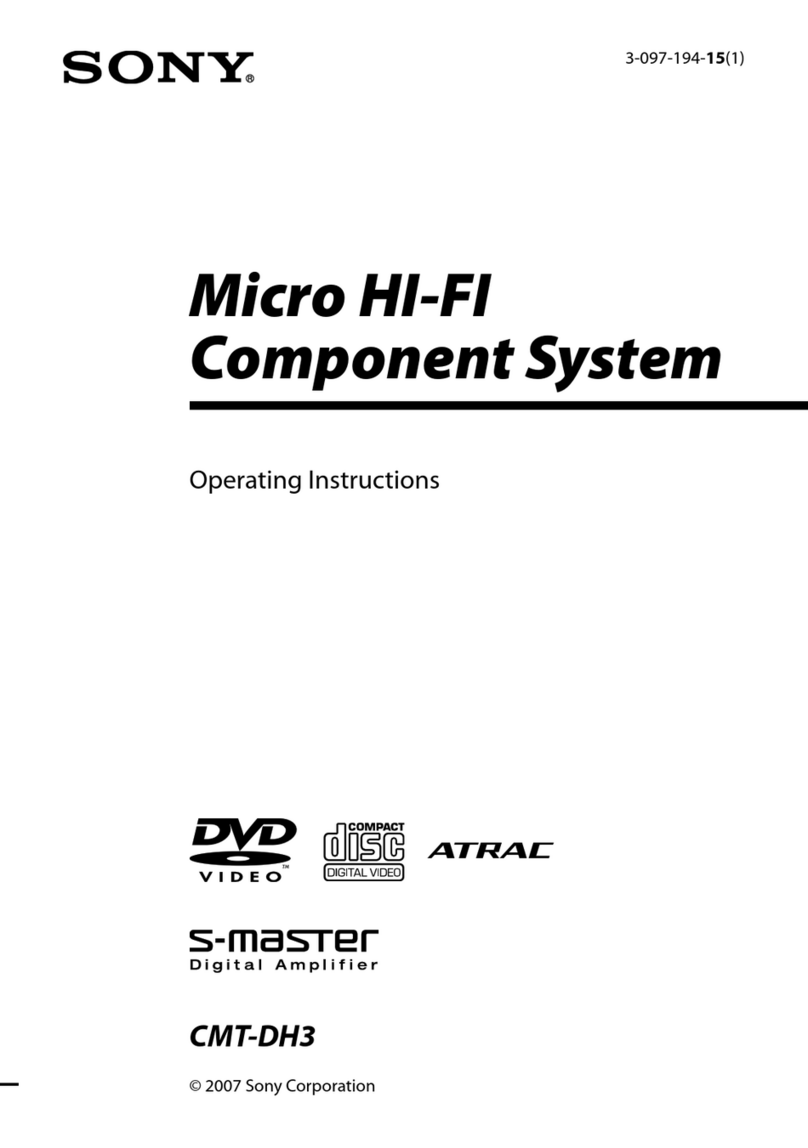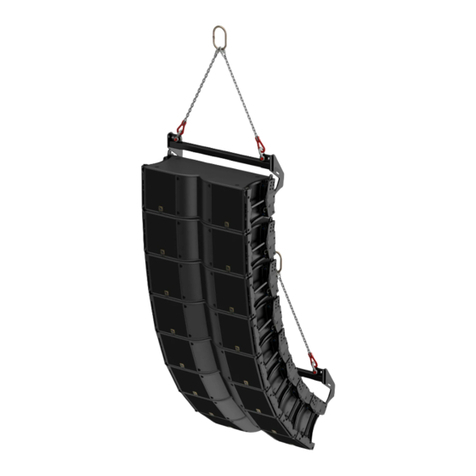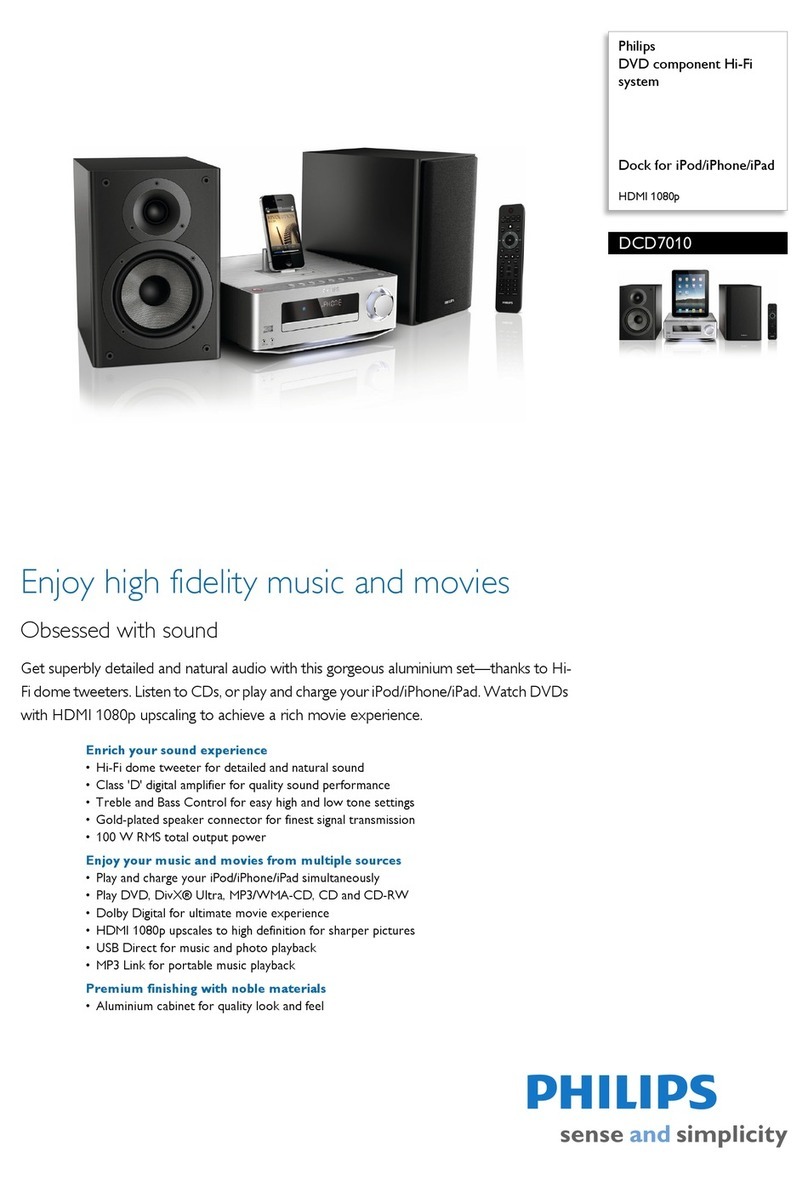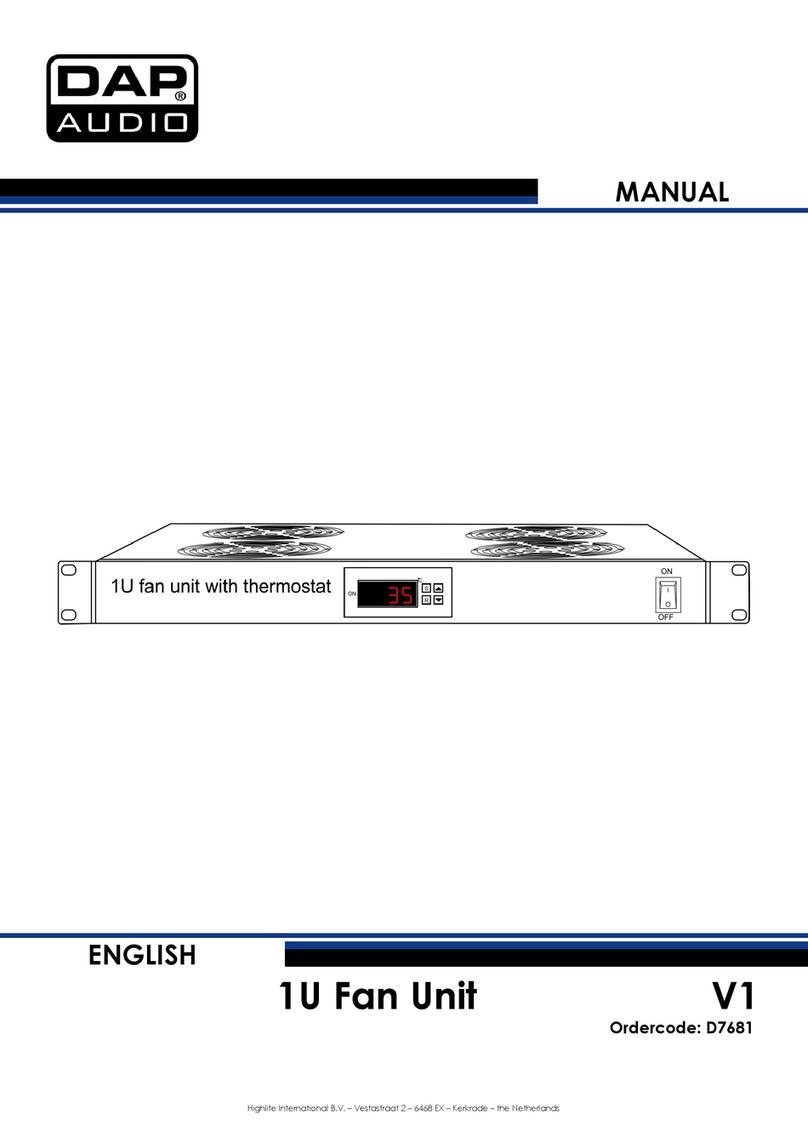PSP Audioware PSP 2445 User manual

PSP 2445
Endorsed by EMT®
Operation Manual
www.PSPaudioware.com

Acknowledgments
Programming and Design: Mateusz Woźniak
Original reverberation algorithms: Barry Blesser
Hardware assistance: Joachim Krukowski
Graphics: Mateusz Woźniak
Product Manager: Antoni Ożyński
Documentation: Orren Merton
Additional presets: Steve Levine
Special thanks to:
Barry Blesser – the creator of EMT 250, EMT 244 and EMT 245 reverberation algorithms
for his extensive support.
Thanks to all our customers around the world for ideas and help in development of new
plug-ins!
By using this software you agree to the terms of any license agreement accompanying it.
“PSP”, the PSP logo, “PSP 2445”, and “It’s the sound that counts!” are trademarks of
PSPaudioware.com s.c.
EMT and its Logo, EMT 244, EMT 245, EMT 250 are registered trademarks of EMT
International GmbH.
All other trademarks are the property of their respective owners.
© 2015 PSPaudioware.com s.c.
___________________________________________________________________
PSP 2445 Operation Manual 2

Table Of Contents
ACKNOWLEDGMENTS............................................................................................................................................ 2
END USER LICENSE AGREEMENT FOR PSP SOFTWARE............................................................................................. 4
PSP 2445.......................................................................................................................................................... 5
Controls........................................................................................................................................................ 5
The About Screen......................................................................................................................................... 7
Hint Bar....................................................................................................................................................... 7
Using presets................................................................................................................................................ 8
TRIAL ACTIVATION INSTRUCTIONS ........................................................................................................................ 9
FULL VERSION ACTIVATION INSTRUCTIONS .......................................................................................................... 11
MINIMUM SYSTEM REQUIREMENTS....................................................................................................................... 13
SUPPORT............................................................................................................................................................ 14
___________________________________________________________________
PSP 2445 Operation Manual 3

End User License Agreement for PSP Software
PREFACE: This End-User License Agreement ("EULA") is a legal agreement between you
and PSPaudioware.com s.c. (PSP) for the PSP product accompanying this EULA, which
includes computer software and may include associated media, printed materials, and
"online" or electronic documentation ("SOFTWARE"). By installing, copying, or using the
SOFTWARE, you agree to be bound by the terms of this EULA. If you do not agree to the
terms of this EULA, you may not use the SOFTWARE.
The SOFTWARE is protected by copyright laws and international copyright treaties, as well
as other intellectual property laws and treaties. The SOFTWARE is licensed, not sold.
LICENSE: You may USE the current version of the SOFTWARE, or in its place any prior
version for the same operating system, on no more than three
computers simultaneously. You can INSTALL a copy of the SOFTWARE on as many
machines as you want so long as you are the direct user or a studio client of those
machines. If more users USE the software you must buy an additional license for each
workstation. The DEMO VERSION of the SOFTWARE is NOT LICENSED FOR
COMMERCIAL USE.
RESTRICTIONS: You may not transfer, modify, rent, lease, loan, resell, distribute, network,
electronically transmit or merge the SOFTWARE. You may not reverse engineer, decompile
or disassemble the SOFTWARE, or otherwise attempt to discover the SOFTWARE source
code. You are not permitted to copy the SOFTWARE or any of the accompanying
documentation.
COPYRIGHTS: All title and copyrights in and to the SOFTWARE (including but not limited
to any images, photographs, animations, video, audio, music, text, and "applets"
incorporated into the SOFTWARE ), the accompanying printed materials, and any copies of
the SOFTWARE are owned by PSP. The SOFTWARE is protected by copyright laws and
international treaty provisions. Unauthorized reproduction or distribution of the SOFTWARE
or documentation is subject to civil and criminal penalties.
DISCLAIMER OF WARRANTY: The SOFTWARE is provided "AS IS" and without warranty
of any kind. The entire risk arising out of the use or performance of the SOFTWARE and
documentation remains with user. To the maximum extent permitted by applicable law, PSP
further disclaims all warranties, either express or implied, including, but not limited to,
implied warranties of merchantability and fitness for a particular purpose, with regard to the
SOFTWARE, and any accompanying hardware. To the maximum extent permitted by
applicable law, in no event shall PSP be liable for any consequential, incidental, direct,
indirect, special, punitive, or other damages whatsoever (including, without limitation,
damages for loss of business profits, business interruption, loss of business information, or
other pecuniary loss) arising out of this EULA or the use of or inability to use the
SOFTWARE, even if PSP has been advised of the possibility of such damages.
MISCELLANEOUS: This EULA is governed by Polish law. Should you have any questions
concerning this EULA, or if you wish to contact PSP for any reason, please write to:
PSPaudioware.com s.c.
Kwadratowa 4/19,
05-509 Jozefoslaw,
Piaseczno,
Poland.
___________________________________________________________________
PSP 2445 Operation Manual 4

PSP 2445
PSP 2445 is a reverb processor inspired by algorithms from two legendary early digital age
reverberators: the EMT 244 and the EMT 245. PSP thoroughly researched how to bring the
specific features of those simple, yet very musical sounding reverbs to life as a plug-in. We
then improved from the originals with a handy set of parameters to control details of the
sound and mix the reverb not available in the original hardware. The PSP 2445 is capable
of processing using one selected engine or both of them simultaneously.
Controls
Power switch – click on the I/O switch or the power indicator to engage or disengage the
signal feed to the processing algorithms. When set to “O” the PSP 2445 is not bypassed
and the output signal depends on Mix and Output Gain settings. Use your host application’s
plug-in bypass control to fully bypass the 2445 reverb.
Engine switch – click and drag the rotary switch to the left, middle or right or click on one
of labels to select the engine mode:
•244 – only the 244 reverberation engine will be mixed to the output,
•+ - both 244 and 245 reverberation engines will be mixed to the output simultan-
eously,
•245 – only the 245 reverberation engine will be mixed to the output.
Input Level meter – indicates the signal level reaching the inputs of the reverberation al-
gorithms. Any value above 0dB will be clipped on the input.
Input Level knob – sets the input level fed to reverberation algorithms.
Delay – sets the predelay time added before the reverberation occurs.
Reflections – sets the amount of early reflections mixed before the reverb tail.
Time knob – sets the reverberation time.
PSP 2445 label – click on the label to open the about box of the plug-in. The about box
contains information about plug-in and authorization details. Click wherever on the about
box area to switch bak to normal plug-in’s view.
___________________________________________________________________
PSP 2445 Operation Manual 5

Low Frequency Time switch – click on the switch or on LEDs above it to switch between
normal and extended reverberation time for low frequency range.
High Frequency Time switch – click on the switch or on the LEDs above it to switch
between normal and dampened reverberation for the high frequency range.
Output Mix knob – sets the amount of dry to reverberated signal ratio.
Output Gain knob – sets the level of the mixed output signal.
Flap – click on the OPEN label opens the hidden parameters flap.
Route – selects plug-in’s input and output routing.
244 out I-II / II-I switch – selects how the 244 engine routes the signal to the plug-ins’s Left
and Right output channels. I-II is a default routing. II-I swaps the output channels’ routing.
LEDs – indicate and select a reverberation engine. Click on a chosen LED to select an en -
gine or select on the plus in between to use both engines.
245 out I-II / II-I switch – selects how the 245 engine routes the signal to the plug-ins’s Left
and Right output channels. I-II is a default routing. II-I swaps the output channels’ routing.
MOD multiplier – sets the reverberator’s modulation depth. The default value is at the 12
o’clock position. Turning the trimpot clockwise leads to a strongly modulated and muddied
effect. Turning the trimpot counter-clockwise reduces the modulation which results in re-
duced tail smoothness and a more resonant character to the reverberation tail.
___________________________________________________________________
PSP 2445 Operation Manual 6
The Original EMT 244 and EMT 245 operated using a mono-to-stereo configuration.
Since we have both engines running simultaneously we can provide more stereo
configurations!with a wet signal.
With the Route switch you can select between three signal configurations:
1. Standard Mono-Stereo configuration. In this configuration any single engine
(244 or 245), or both running in parallel (244 + 245), can provide a stereo output followed
by Width,!Balance, Mix and Output.
2. Stereo-Stereo mode varies the sound depending on which input channel the signal!
!is coming from. In this mode the stereo reverb differs from standard Mono-Stereo even!
!if the input is fed with a mono signal because of the additional processing used to create
True Stereo-to-Stereo operation. Using a single 244 or 245 engine results in a highly
shifted stereo!field, thus 244 + 245 mode is recommended. For best results set!244
to II-I and set 245 to I-II configuration.
!3. Dual Mono mode allows you to run the 244 engine on the left channel and the 245
on the right!channel without any cross-feeding. For dense reverb set 244 and 245 engines
to I-II. For sparse reverb tail select II-I mode for both engines.
In all modes Width and Balance work the same as in!Mono-Stereo mode.

Close button – click to close the hidden parameters’ flap.
HPF – sets the reverberation high pass filter to reduce the amount of low frequency content
in the reverberated signal. The high pass filter is located on the input of the reverberation
input.
LOW – adjusts the reverberation time for low frequency range.
HIGH – adjusts the reverberation time for high frequency range.
WIDTH – sets the stereo width of the reverberated signal.
BALance – sets the balance of the reverberated signal.
The About Screen
Each PSP plug-in offers an About window. This screen contains your authorization details,
as well as the version number of the plug-in. To access each plug-in’s about box, click on
the name of the plug-in. To return to the controls view, click the name of the plug-in again
(or anywhere in the about screen).
Hint Bar
Hints on/off
Click on the light bulb to show or hide hints in the hint bar.
Hint Text
A short description of the control that your mouse is hovering over.
When the mouse is off plug-in’s GUI or it is disengaged there is a PSPaudioware web site
link by default. Double click on the link to open our company page.
___________________________________________________________________
PSP 2445 Operation Manual 7
Most algorithmic reverberators have some inherent modulation—sometimes noticeable,
sometimes not. This is because the complexity of algorithmic reverbs is considerably
simplified from an actual studio or hall environment. This is reflected in the number
of resonances, or the pattern and mechanical character, of reverb tail reflections. To deal
with these limitations, modulation is added to spread resonances and smooth out a tail
pattern. Sometimes you may want this modulation to obvious on tracks, other times you
may not, so we provide a parameter that will lessen or exaggerate the modulation
in PSP 2445. The lower the modulation the more synthetic, resonant and grainy
the reverb is—however chorusing is less noticeable. The higher the modulation level
is set the less periodic the reverb tail is and is more blurred—at the expanse
of exaggerated chorusing effects.
Try lowering the MOD multiplier counter clockwise from the 12:00 hardware default
setting if a track naturally exaggerates the reverb's internal modulation. Set the MOD
to a high value by turning it clockwise if you want to get a blurred tail with a highly
noticeable warbling.

Using presets
PSP 2445 is provided with factory sets of presets.
The main aim of included presets is to show customers the features of the plug-in and help
to learn the controls usage. In addition, the presets can be used as a starting point for
further adjustments or as quick fix presets.
The PSP 2445 presets can be accessed from the PSPaudioware standard PRESET bar at
the bottom of the plug-in interface. Here you can select from among the factory presets,
and load and save individual, as well as banks of presets. There are three sections to this
bar, the PRESET section, the Preset window, and the BANK section.
BANK SECTION
Click the green arrow icon to load a bank from a disk.
Click the red arrow icon to save a bank.
Double click the BANK label to permanently store the default preset bank.
Press Command (Mac) or Control (PC) and double click to restore the factory default bank.
PRESET SECTION
Click the green arrow icon to load a preset.
Click the red arrow icon to save a preset.
Double click the PRESET label to permanently store the default preset.
Press Command (Mac) or Control (PC) and double click to restore the factory default
preset.
PRESET EDIT BOX
Click the menu button to the right of the preset edit box to see and the popup menu of all
the presets in the currently loaded preset bank and to choose a preset from the list.
Click the name of the preset to rename it.
PRESET SELECTION
Click on the bright left arrow to switch to a previous preset on the list.
Click on the bright right arrow to switch to a next preset on the list..
MEMO A and B
Both A and B are permanently stored on your disk. This allows you to compare alternative
settings or share a preset between various instances of the plug-in in the same project or
even between various projects.
Click the green arrow icon to load a preset from memo A or B.
Click the red arrow icon to save a preset to memo A or B.
?
Click on the question mark whenever you need to open the operation manual.
___________________________________________________________________
PSP 2445 Operation Manual 8

Trial Activation Instructions
In order to run a plug-in in 30 day demo mode, you need an iLok user ID which you can
create free at https://www.ilok.com/, and you need to install the free iLok License Manager
application.
A hardware USB iLok dongle is NOT required, however it is optional.
1. Run the installer on your computer and follow the steps to complete the installation.
2. Launch your host application (Pro Tools, Logic, Cubase, Sonar, Live etc.), which will
scan your plug-ins and prompt you with an activation window.
3. To run a plug-in demo click "Try" in the PSP activation window and then enter your
iLok account details.
___________________________________________________________________
PSP 2445 Operation Manual 9

4. Select the activation location. You can activate the license in three separate
locations, each of which can be either a computer or an iLok dongle (2nd generation
or above). You can move these licenses at any time using PACE's iLok License
Manager software.
5. Enjoy using our plug-in for next 30 days without any limitation!
___________________________________________________________________
PSP 2445 Operation Manual 10

Full Version Activation Instructions
In order to activate the plug-in, you need an iLok user ID which you can create for free at
https://www.ilok.com/, and you need to install the free iLok License Manager application.
A hardware USB iLok dongle is NOT required, however it is optional.
1. Download the PSP installer from your PSP user area account.
2. Run the installer on your computer and follow the steps to complete the installation.
3. Launch your host application (Pro Tools, Logic, Cubase, Sonar, Live etc.), which will
scan your plug-ins and prompt you with an activation window.
4. Click the Activate button and enter your activation code, which is listed in the
product table for your account in our user area (in the column authorization details).
Click next.
___________________________________________________________________
PSP 2445 Operation Manual 11

5. Type in your iLok account user ID and password. Click next.
6. Select the activation location. You can activate the license in three separate
locations, each of which can be either a computer or an iLok dongle (2nd generation
or above). You can move these licenses at any time using PACE's iLok License
Manager software.
7. Activation is complete. Enjoy using our plug-ins! We hope you find them useful in
your productions.
___________________________________________________________________
PSP 2445 Operation Manual 12

Minimum System Requirements
PC
VST
•Windows x32 or x64 (Vista, 7, 8 or 10)
•VST 2.4 compatible application
RTAS
•Windows x32 or x64 (XP Service Pack 2, Vista, 7 or 10)
•ProTools 8.0.0 (or later)
AAX
•Windows x32 or x64 (XP Service Pack 2, Vista, 7 or 10)
•Pro Tools 10, 11, 12 or Pro Tools HD 10, 11, 12
All DAWs
•Up to date iLok License Manager application installed
Mac
AudioUnit
•Mac OSX 10.8, 10.9, 10.10 or 10.11
•32 or 64-bit host application capable of running AudioUnit plug-ins with Cocoa view
VST
•Mac OSX 10.8, 10.9, 10.10 or 10.11
•32 or 64-bit VST 2.4 compatible host application
RTAS
•Mac OSX 10.8, 10.9, 10.10 or 10.11
•ProTools LE 8.0.0 or ProTools TDM 8.0.0 (or later)
AAX
•Mac OSX 10.8, 10.9, 10.10 or 10.11
•Pro Tools 10, 11, 12 or Pro Tools HD 10, 11, 12
All DAWs
•Up to date iLok License Manager application installed
___________________________________________________________________
PSP 2445 Operation Manual 13

Support
If you have any questions about any of our plug-ins, please visit our website
http://www.PSPaudioware.com where you can find the latest product information, free
software updates, online support forum and answers to the most frequently asked
questions.
of your questions. As a rule we respond within 24 hours.
PSPaudioware.com s.c.
Kwadratowa 4/19
05-509 Józefosław
Poland.
ph. +48 601 96 31 73
www.PSPaudioware.com
contact@PSPaudioware.com
___________________________________________________________________
PSP 2445 Operation Manual 14
Table of contents
